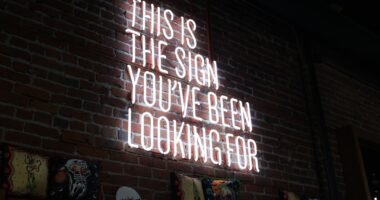Non-fungible tokens (NFTs) are unique digital assets that represent ownership or authenticity of specific digital items, such as art, videos, or music. Unlike cryptocurrencies, which are interchangeable, NFTs are one-of-a-kind and cannot be exchanged on a like-for-like basis. This uniqueness contributes to their value in the digital art world.
NFTs utilize blockchain technology, a decentralized digital ledger that records transactions across multiple computers. This technology ensures the security and authenticity of NFTs by making them verifiable and tamper-proof. The ownership and transaction history of NFTs are transparent and publicly accessible, providing trust and accountability for creators and buyers.
The emergence of NFTs has created new opportunities for artists and creators to monetize their digital works and connect with a global audience of collectors and enthusiasts. This technology has significantly impacted the digital art market and continues to evolve in various applications across different industries.
Key Takeaways
- NFTs are unique digital assets that represent ownership of a specific item or piece of content on the blockchain.
- When creating digital art for NFTs, focus on creating high-quality, original, and unique pieces that will stand out in the market.
- Different platforms for launching NFTs offer various features and benefits, so it’s important to research and compare options before choosing one.
- Setting up your NFT involves creating a digital wallet, minting your artwork, and determining the terms of the sale and ownership rights.
- Marketing your NFT involves leveraging social media, online marketplaces, and networking with collectors to attract potential buyers and increase visibility.
- Navigating legal and copyright considerations for NFTs is crucial to ensure that you have the rights to sell the digital art and to protect yourself from potential legal issues.
- The future of NFTs holds opportunities for artists and creators, but also presents challenges such as environmental concerns and market saturation.
Choosing Your Digital Art: Tips for Creating NFT-Worthy Pieces
Experimenting with Different Mediums and Styles
Experimenting with different mediums, styles, and concepts can help you create digital art that is not only visually stunning but also emotionally impactful.
The Story Behind the Piece
Another important aspect to consider when creating NFT-worthy digital art is the story behind the piece. NFT collectors are often drawn to art that has a compelling narrative or concept behind it. Whether it’s a personal story, a social commentary, or a reflection of current events, adding depth and meaning to your digital art can make it more appealing to potential buyers.
Technical Quality Matters
Additionally, paying attention to the technical quality of your digital art, such as resolution, file format, and overall presentation, can make a significant difference in how your art is perceived in the NFT marketplace.
Platforms for Launching NFTs: Comparing Options and Features

When it comes to launching your NFTs, there are several platforms to choose from, each with its own unique features and benefits. Some of the most popular NFT marketplaces include OpenSea, Rarible, Foundation, and SuperRare. These platforms offer creators the opportunity to mint and sell their NFTs to a global audience of collectors and enthusiasts.
OpenSea, for example, is one of the largest NFT marketplaces and allows creators to mint various types of digital assets, including art, domain names, virtual worlds, and more. Rarible stands out for its decentralized nature, allowing creators to have more control over their NFTs and royalties. Foundation is known for its curated selection of high-quality digital art and its focus on supporting emerging artists.
SuperRare, on the other hand, prides itself on its exclusive community of artists and collectors, as well as its emphasis on curation and scarcity. Each platform has its own set of features, fees, and community dynamics, so it’s essential to research and compare them to find the best fit for your NFTs. Additionally, some platforms may require you to apply or be invited to join, while others may have more open registration processes.
Setting Up Your NFT: Step-by-Step Guide to Creating and Minting
Minting your NFT involves creating a digital token that represents ownership or proof of authenticity of your digital art. The process typically involves choosing a platform, connecting your digital wallet, uploading your digital art files, adding metadata and details about your piece, setting a price or auction format, and paying any associated fees. Each platform may have its own specific requirements and steps for minting NFTs, so it’s important to carefully follow their guidelines and instructions.
To start minting your NFT, you’ll need to have a digital wallet that is compatible with the platform you choose. This wallet will be used to store your NFTs and manage your transactions. Once you have your wallet set up, you can then connect it to the platform and begin the minting process.
Uploading your digital art files is the next step, where you’ll need to provide high-quality images or files of your artwork. Adding metadata such as title, description, edition number (if applicable), and any additional details about your piece can help potential buyers learn more about your art. Setting a price or choosing an auction format for your NFT is another crucial step in the minting process.
You’ll need to decide on a price that reflects the value of your digital art while also considering market trends and collector demand. Some platforms offer options for fixed-price sales, while others support auction-style sales where buyers can place bids on your NFT. Finally, paying any associated fees for minting and listing your NFT is necessary to complete the process.
Marketing Your NFT: Strategies for Attracting Buyers and Collectors
Once your NFT is minted and listed on a platform, the next step is to market it effectively to attract buyers and collectors. Building a strong online presence through social media platforms, art communities, and NFT forums can help you reach a wider audience and generate interest in your digital art. Sharing behind-the-scenes content, work-in-progress updates, and personal insights into your creative process can engage potential buyers and create a sense of connection with your art.
Collaborating with other artists or influencers in the NFT space can also help you expand your reach and tap into new networks of collectors. Cross-promotions, joint releases, or collaborative projects can create buzz around your NFTs and attract attention from a diverse audience. Additionally, participating in virtual events, online exhibitions, or live streams can provide opportunities to showcase your digital art and interact with potential buyers in real-time.
Engaging with your audience through interactive experiences such as virtual meetups, Q&A sessions, or exclusive previews can foster a sense of community around your NFTs and encourage collectors to invest in your art. Offering incentives such as limited-time bonuses, exclusive content, or special access can also incentivize potential buyers to take action and acquire your NFTs.
Navigating Legal and Copyright Considerations for NFTs

As with any form of digital content creation and distribution, navigating legal and copyright considerations is crucial when dealing with NFTs. It’s important to ensure that you have the legal right to mint and sell the digital art you create as an NFT. If you’re using third-party assets such as images, music, or other copyrighted material in your digital art, you’ll need to obtain the necessary permissions or licenses from the original creators or rights holders.
Understanding the terms of use and licensing agreements for any assets you incorporate into your digital art is essential to avoid copyright infringement or legal disputes down the line. Additionally, documenting the provenance and ownership history of your digital art can provide transparency and assurance to potential buyers regarding the authenticity of your NFTs. Seeking legal advice or consulting with intellectual property professionals can help you navigate complex legal issues related to NFTs and ensure that you’re operating within the bounds of copyright law.
Protecting your own intellectual property rights as an artist is equally important when entering the world of NFTs. Clearly outlining the terms of use, resale rights, royalties, and any other relevant details in your NFT listings can help safeguard your rights and establish clear expectations for buyers.
The Future of NFTs: Exploring Opportunities and Challenges
The future of NFTs holds both exciting opportunities and significant challenges for artists, creators, collectors, and the broader digital ecosystem. As the technology continues to evolve and gain mainstream adoption, we can expect to see new applications of NFTs beyond digital art, including virtual real estate, gaming assets, event tickets, intellectual property rights management, and more. The potential for creating unique experiences and unlocking new revenue streams through NFTs is vast.
However, with this growth comes challenges related to sustainability, inclusivity, environmental impact (due to the energy consumption of blockchain networks), market saturation, speculation-driven volatility in prices, and regulatory uncertainties. It’s important for creators and platforms to address these challenges proactively by promoting sustainable practices, fostering diversity and accessibility in the NFT space, advocating for responsible consumption and investment behaviors among collectors. Education and awareness about the potential benefits and risks of NFTs will be crucial in shaping a healthy and thriving ecosystem that empowers creators while also protecting the interests of buyers and investors.
Collaborative efforts between artists, platforms, collectors, regulators, and industry stakeholders can help establish best practices, standards, and ethical guidelines for the responsible creation, distribution, and consumption of NFTs. In conclusion, understanding the fundamentals of NFTs, creating high-quality digital art that resonates with collectors, choosing the right platform for launching your NFTs, navigating legal considerations effectively minting your NFTs marketing strategies for attracting buyers navigating legal considerations effectively minting your NFTs marketing strategies for attracting buyers navigating legal considerations effectively minting your NFTs marketing strategies for attracting buyers navigating legal considerations effectively minting your NFTs marketing strategies for attracting buyers navigating legal considerations effectively minting your NFTs marketing strategies for attracting buyers navigating legal considerations effectively minting your NFTs marketing strategies for attracting buyers navigating legal considerations effectively minting your NFTs marketing strategies for attracting buyers navigating legal considerations effectively minting your NFTs marketing strategies for attracting buyers navigating legal considerations effectively minting your NFTs marketing strategies for attracting buyers navigating legal considerations effectively minting your NFTs marketing strategies for attracting buyers navigating legal considerations effectively minting your NFTs marketing strategies for attracting buyers navigating legal considerations effectively minting your NFTs marketing strategies for attracting buyers navigating legal considerations effectively minting your NFTs marketing strategies for attracting buyers navigating legal considerations effectively minting your NFTs marketing strategies for attracting buyers navigating legal considerations effectively minting your NFTs marketing strategies for attracting buyers navigating legal considerations effectively minting your NFTs marketing strategies for attracting buyers navigating legal considerations effectively minting your NFTs marketing strategies for attracting buyers navigating legal considerations effectively minting your NFTs marketing strategies for attracting buyers navigating legal considerations effectively minting your NFTs marketing strategies for attracting buyers navigating legal considerations effectively minting your NFTs marketing strategies for attracting buyers navigating legal considerations effectively minting your NFTs marketing strategies for attracting buyers navigating legal considerations effectively minting your NFTs marketing strategies for attracting buyers navigating legal considerations effectively minting your NFTs marketing strategies for attracting buyers navigating legal considerations effectively minting your NFTs marketing strategies for attracting buyers navigating legal considerations effectively minting your NFTs marketing strategies for attracting buyers navigating legal considerations effectively minting your NFTs marketing strategies for attracting buyers navigating legal considerations effectively minting your NFTs marketing strategies for attracting buyers navigating legal considerations effectively minting your NFTs marketing strategies for attracting buyers navigating legal considerations effectively minting your NFTs marketing strategies for attracting buyers navigating legal considerations effectively minting your NFTs marketing strategies for attracting buyers navigating legal considerations effectively minting your NFTs marketing strategies for attracting buyers navigating legal considerations effectively minting your NFTs marketing strategies for attracting buyers navigating legal considerations effectively minting your NFTs marketing strategies for attracting buyers navigating legal considerations effectively minting your NFTs marketing strategies for attracting buyers navigating legal considerations effectively minting your NFTs marketing strategies for attracting buyers navigating legal considerations effectively minting your NFTs marketing strategies for attracting buyers navigating legal considerations effectively minting your NFTs marketing strategies for attracting buyers navigating legal considerations effectively minting your NFTs marketing strategies for attracting buyers navigating legal considerations effectively minting your NFTs marketing strategies for attracting buyers navigating legal considerations effectively minting your NFTs marketing strategies for attracting buyers navigating legal considerations effectively minting your NFTs marketing strategies for attracting buyers navigating legal considerations effectively minting your NFTs marketing strategies for attracting buyers navigating legal considerations effectively minting your NFTs marketing strategies for attracting buyers navigating legal considerations effectively minting your NFTs marketing strategies for attracting buyers navigating legal considerations effectively minting your NFTs marketing strategies for attracting buyers navigating legal considerations effectively minting your NFTs marketing strategies for attracting buyers navigating legal considerations effectively minting your NFTs marketing strategies for attracting buyers navigating legal considerations effectively minting your NFTs marketing strategies for attracting buyers navigating legal considerations effectively minting your NFTs marketing strategies for attracting buyers navigating legal considerations effectively minting your NFTs marketing strategies for attracting buyers navigating legal considerations effectively minting your NFTs marketing strategies for attracting buyers navigating legal considerations effectively minting your NFTs marketing strategies for attracting buyers navigating legal considerations effectively minting your NFTs marketing strategies for attracting buyers navigating legal considerations effectively minting your NFTs marketing strategies for attracting buyers navigating legal considerations effectively minting your NFTs marketing strategies for attracting buyers navigating legal considerations effectively minting your NFTs marketing strategies for attracting buyers navigating legal considerations effectively minting your NFTs marketing strategies for attracting buyers navigating legal considerations effectively minting your NFTs marketing strategies for attracting buyers navigating legal considerations effectively minting your NFTs marketing strategies for attracting buyers navigating legal considerations effectively minting your NFTs marketing strategies for attracting buyers navigating legal considerations effectively minting your NFTs marketing strategies for attracting buyers navigating legal considerations effectively minting your NFTs marketing strategies for attracting buyers navigating legal considerations effectively minting your NFTs marketing strategies for attracting buyers navigating legal considerations effectively minting your NFTs marketing strategies for attracting buyers navigating legal considerations effectively minting your NFTs marketing strategies for attracting buyers
If you’re interested in learning more about the latest news and updates in the world of NFTs and digital art, be sure to check out the latest articles on ETH News. Whether you’re a beginner looking to launch your first NFT or an experienced artist navigating the digital art market, ETH News has a wealth of resources and information to help you stay informed and make the most of your NFT endeavors.
FAQs
What is an NFT?
An NFT, or non-fungible token, is a digital asset that represents ownership or proof of authenticity of a unique item or piece of content, such as digital art, videos, music, or other digital files.
How do I create an NFT for my digital art?
To create an NFT for your digital art, you will need to choose a blockchain platform that supports NFTs, such as Ethereum or Binance Smart Chain. Then, you will need to use a marketplace or platform that allows you to mint and list your NFT, such as OpenSea, Rarible, or Mintable.
What is the process of minting an NFT?
Minting an NFT involves creating a unique token on a blockchain platform and attaching it to a digital file, such as an image, video, or audio file. This process establishes ownership and authenticity of the digital asset.
What are the costs associated with creating an NFT?
The costs associated with creating an NFT include gas fees for minting the NFT on the blockchain, as well as any platform or marketplace fees for listing and selling the NFT. These costs can vary depending on the blockchain platform and marketplace used.
How can I sell my NFT after creating it?
After creating an NFT, you can sell it on a marketplace or platform that supports NFT trading, such as OpenSea, Rarible, or Foundation. You can set a price for your NFT or list it for auction, and buyers can purchase it using cryptocurrency.
What are the benefits of creating and selling NFTs?
Creating and selling NFTs allows artists and creators to monetize their digital art and other digital content, establish ownership and authenticity, and reach a global audience of collectors and enthusiasts. NFTs also provide a new way for artists to connect with their fans and supporters.





